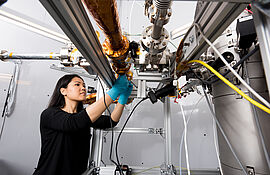Doctoral Research in Physics
VDSP students are the basis of a vibrant community that unites 50 strong research teams in the Faculty of Physics. Our research is driven by the excellence of individuals, which inspire each other.
VDSP students are the driving force behind all research and the essential links between all our research groups. VDSP students have access to the full breath of our physics education and can focus on their own research in many specialized courses, too.
VDSP students are united in the common goal to understand the foundations of physics from high energy, gravitational and mathematical physics to the roots of quantum science. They explore advanced materials and the application of physics to solve challenges of modern society, related to environmental monitoring, energy storage, imaging and measurement tools for materials research or the life sciences or in future of communication and computation technologies.
The following links to the research groups highlight our fields of expertise. The thematic subgroups are connected through joint teaching and meeting programmes, which are described here.
-
Abert Claas - Magnetic Simulation
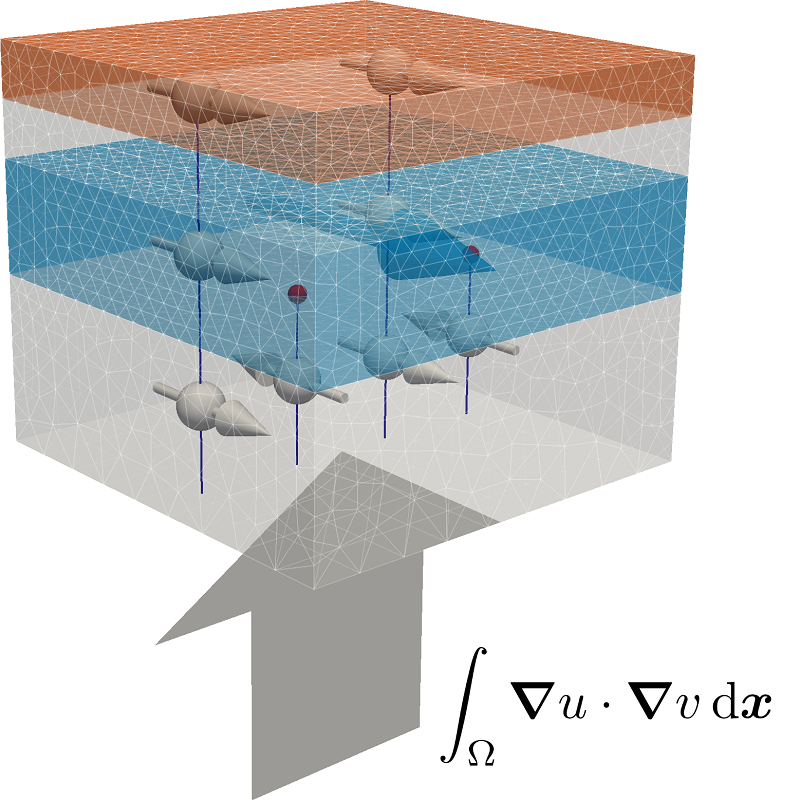
Magnetic Simulation
Member of the research group Physics of Functional Materials
Since the rise of high performance computing, numerical simulations are an integral part of material science. For magnetic materials the micromagnetic model has proven to be an excellent tool for the description of static properties of well as the dynamics of the magnetization on the nanoscale. The micromagnetic model is a semiclassical continuum model that accounts for classical fields as well as quantumechanical contributions like exchange coupling and that is able to resolve the inner structure of domain walls. The model is defined in terms of partial differential equations whose analytical solution is only possible for simple edge cases.
-
Arndt Markus - Quantum Nanophysics and Molecular Quantum Optics
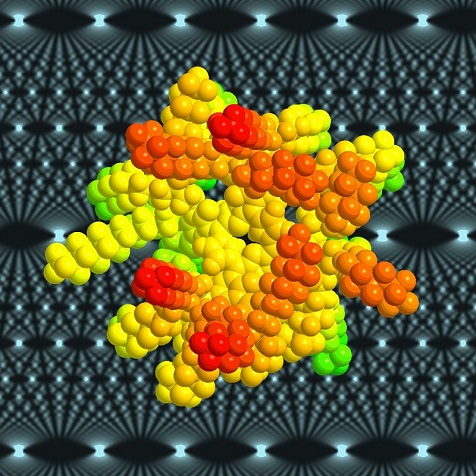
Quantum Nanophysics & Molecular Quantum Optics
Member of the research group Quantum Optics, Quantum Nanophysics and Quantum Information
We are developing universal matter-wave interferometers for quantum experiments with complex and biologically relevant molecules, cluster and nanoparticles. We probe the foundations of quantum physics and are pushing the experimental frontiers to decoherence and the classical world. We build new quantum tools to serve chemistry and molecular analytics and explore a vast range of new particle preparation and cooling techniques across all complexity scales from molecules to dielectric nanoparticles.
-
Aspelmeyer Markus - Exploring the Boundaries of Quantum Physics and Gravity in Experiments
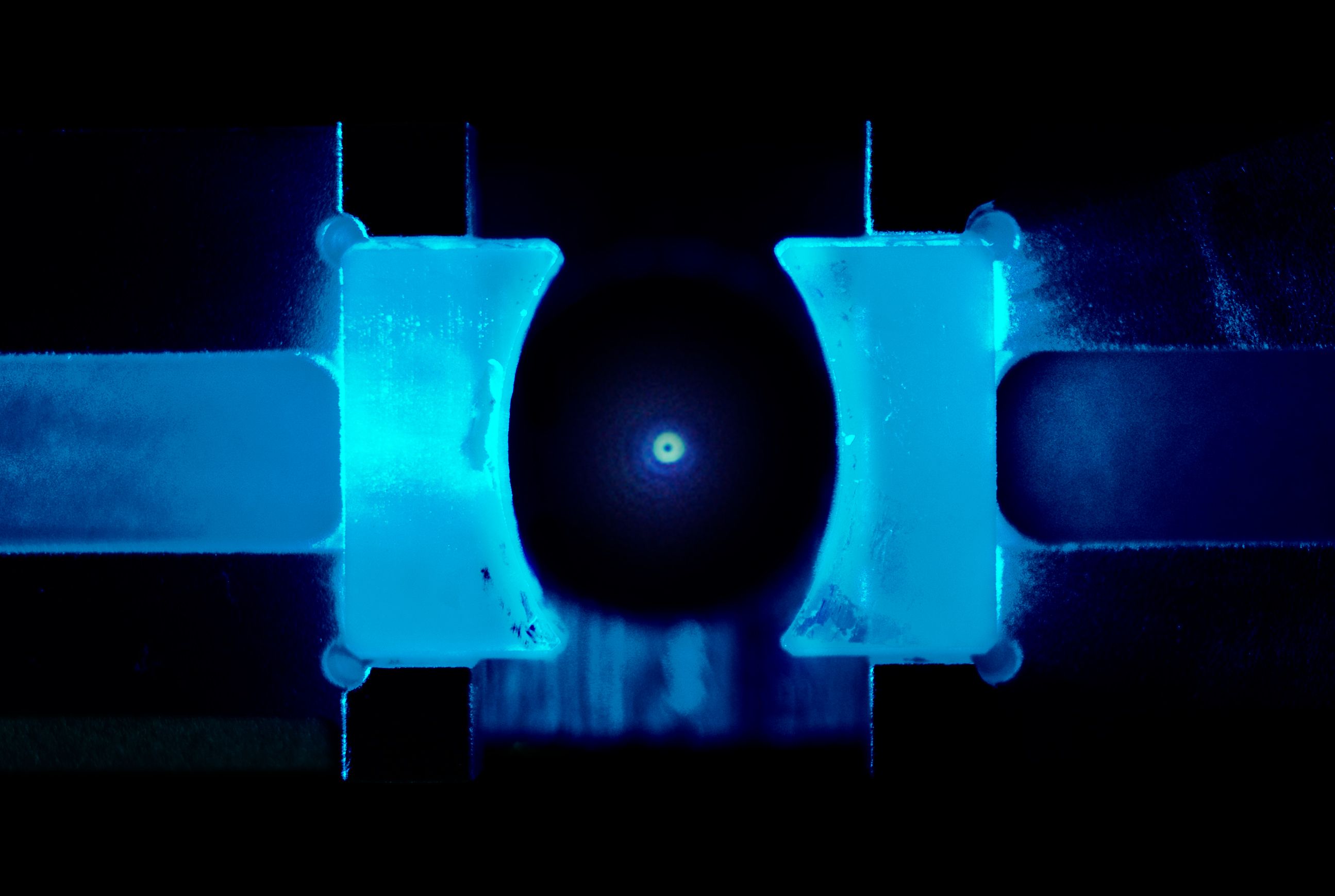
Exploring the Boundaries of Quantum Physics and Gravity in Experiments
Member of the research group Quantum Optics, Quantum Nanophysics and Quantum Information
"How does a quantum object gravitate?”, “How far can we push massive objects into the quantum regime?”, “How well can we measure gravity of microscopic systems?”. Such questions and their implications for the foundations of physics are the driving force behind our research. To address them we are developing quantum measurement and control techniques to investigate and utilize quantum states of motion of massive solid state objects. We are also developing inertial precision sensing techniques to measure the gravitational field of the smallest possible source masses. Our research aims to provide new insights on macroscopic quantum physics, on gravity at small scales and, in the long run, on the phenomenology of the gravity-quantum interface in table-top experiments.
-
Ayala Paola - Taylored Hybrid Structures
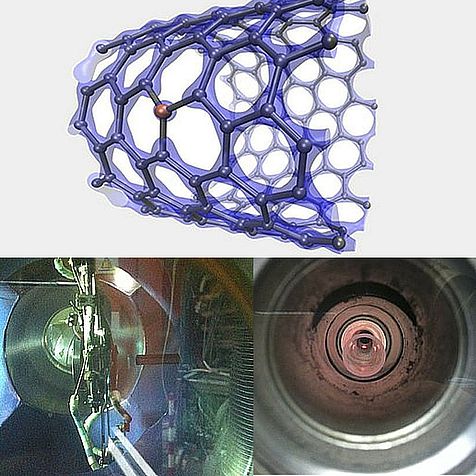
Taylored Hybrid Structures
Member of the research group Electronic Properties of Materials
The group Tailored Hybrid Structures (THS) works on the production and spectroscopy of filled and substitutionally doped carbon nanotubes.
-
Banszerus Luca - Quantum Transport In Low Dimensional Materials
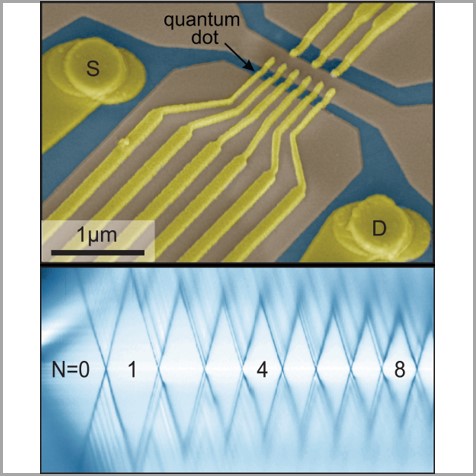
Qantum Transport In Low Dimensional Materials
Our research focuses on quantum transport and the electronic properties of nanoelectronic devices based on van der Waals heterostructures made from two-dimensional (2D) materials, such as graphene. We use electrostatically defined quantum dots (QDs) and quantum point contacts (QPCs) to probe mesoscopic effects and emergent correlated phenomena, including superconductivity in novel, tailored quantum materials. Our nanoelectronic devices are fabricated using advanced nanostructuring technologies and characterized electrically at millikelvin temperatures, enabling insights into the fundamental physics of low-dimensional systems.
-
Brukner Caslav - Quantum foundations and quantum information theory
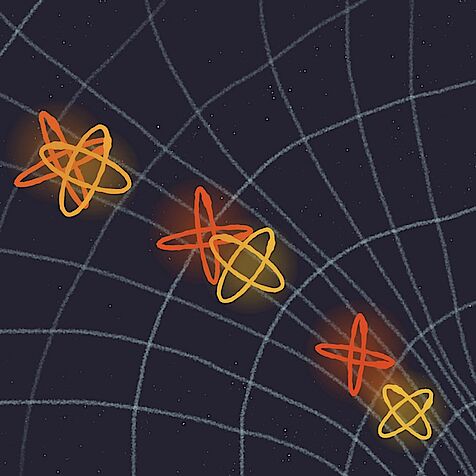
Quantum foundations & quantum information theory
Member of the research group Quantum Optics, Quantum Nanophysics and Quantum Information
The goal of our team is to gain insight into quantum foundations and quantum information by exploiting operational and information-theoretic approaches. The team has recently applied them to the field of causality and gravity.
-
Carqueville Nils - Mathematical Physics
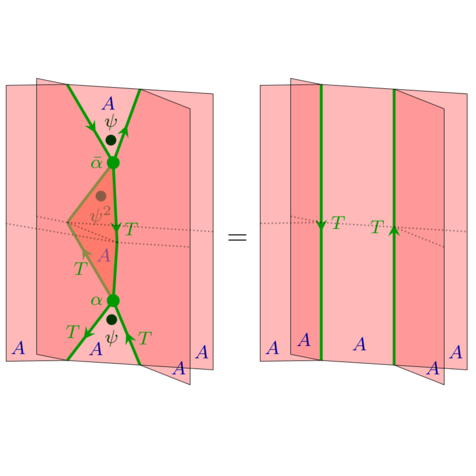
Mathematical Physics
The Mathematical physics group at the University of Vienna studies theoretical and mathematical questions in quantum field theory, gravity and quantum gravity. The research includes topics like string theory, supergravity and higher-spin gravity, conformal field theory, quantum field theory on non-commutative space-times and many-body quantum physics.
Nils Carqueville's interests include rigorous and elegant approaches to quantum field theory. He employs methods and ideas from algebra, topology and higher category theory to tackle aspects of foundational theoretical physics, their interaction with mathematics, and topological quantum computation. -
Cerbino Roberto - Experimental Soft Matter
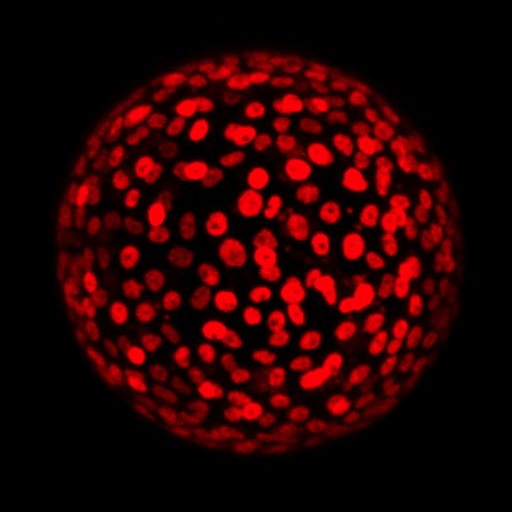
Experimental Soft Matter
Member of the research group Computational and Soft Matter Physics
We use light to probe soft matter, ranging from fundamental building blocks, such as colloidal particles and polymers, to commercial products, such as yogurts or softeners; we also study the collective behavior of biological systems, for instance bacteria and epithelial cells. Some of our experiments are performed in collaboration with industry and/or in space, for example on the International Space Station (ISS).
-
Chruściel Piotr - Gravitational Physics
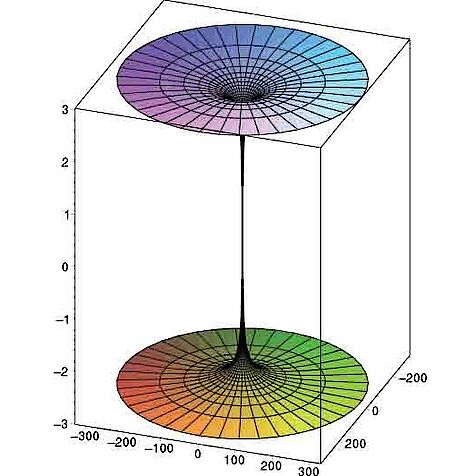
Gravitational Physics
Piotr Chruściel heads the Gravitational Physics group of the Faculty of Physics. His research has been focused on studies of the global structure of solutions of Einstein equations. This covers questions such as cosmic censorship, asymptotics, as well as many global issues in Lorentzian geometry such as the structure of horizons and the area theorem. He has worked on the general relativistic constraint equations, mass in general relativity, and on classification of black hole space-times. His recent research interests include the understanding of imprints of general relativity on quantum optics.
-
Chumak Andrii - Nanomagnetism and Magnonics
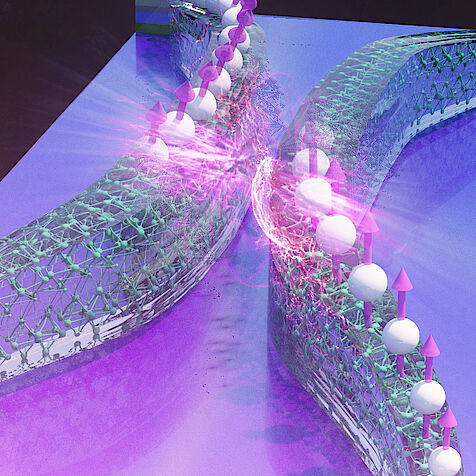
Nanomagnetism and Magnonics
Magnonics is an emerging field of research in condensed matter physics and materials science that focuses on the study of magnons and their use in information processing. Magnons are quanta of spin waves – collective spin excitations in magnetic materials, analogous to how photons are quanta of light or phonons are quanta of lattice vibrations in crystals. The core mission of the "Nanomagnetism and Magnonics" research group is twofold: first, to unravel the intriguing physical phenomena inherent in spin waves in nanostructures, and second, to harness these phenomena for pioneering applications.
-
Dakic Borivoje - Operational quantum information
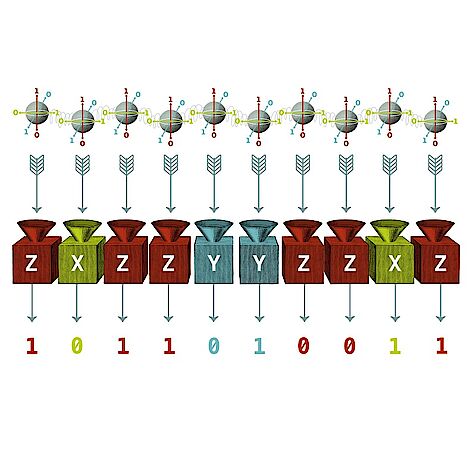
Operational quantum information
Member of the research group Quantum Optics, Quantum Nanophysics and Quantum Information
Our research interests follow three principal directions: foundations of quantum mechanics, quantum information theory and practical quantum information.
-
Dellago Christoph - Computational Statistical Mechanics
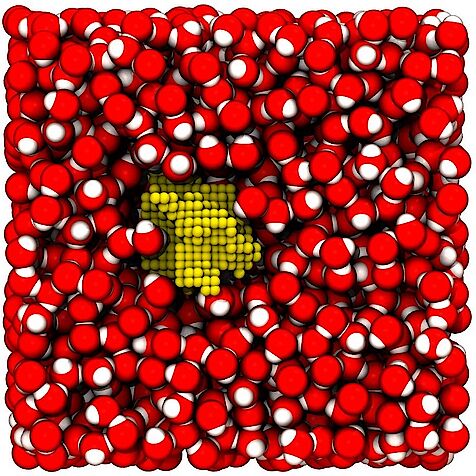
Computational Statistical Mechanics
Member of the research group Computational and Soft Matter Physics
Using the computational and theoretical tools of modern statistical mechanics, we study phenomena occurring in complex ordered and disordered systems at the nanoscale. Current research focuses on stochastic thermodynamics, nanoscale materials, interfaces, phase transitions and self-assembly in soft matter. A major research effort of the group consists in developing trajectory-based sampling methods and machine learning approaches for the simulation of molecular systems.
-
Dobrovolskiy Oleksandr - Superconductivity and Fluxonics
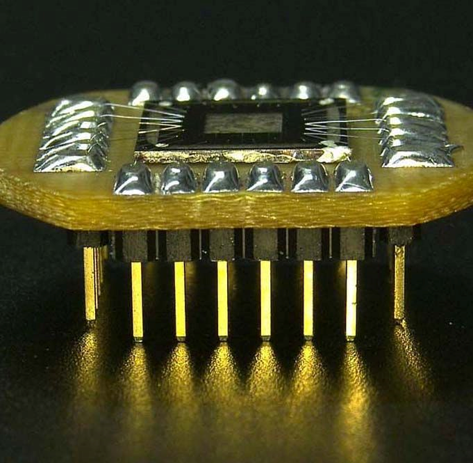
Superconductivity and Fluxonics
Member of the research group Nanomagnetism and Magnonics
Our research is concerned with superconductors and their applications in quantum sensing and information processing (fluxonics). We engineer and explore superconductor-based hybrid systems in which magnetic flux quanta (Abrikosov vortices) interact with other excitations such as, e.g. spin waves (magnons) and microwave and optical photons. Experiments are performed at cryogenic temperatures and augmented with numerical modeling.
-
Fajman David - Geometric analysis and gravitation
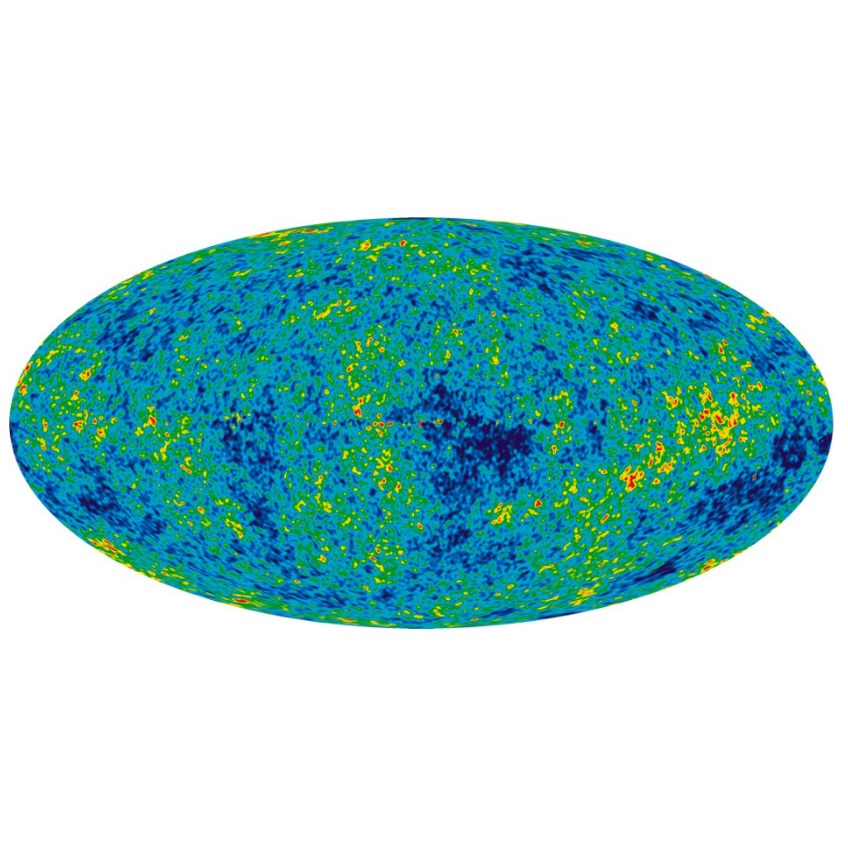
Geometric analysis and gravitation
Member of the research group Gravitational physics
I work in the field of Geometric Analysis in the context of Mathematical Physics, more specifically on problems in Mathematical Relativity.
-
Fally Martin - Holography and Neutron Optics
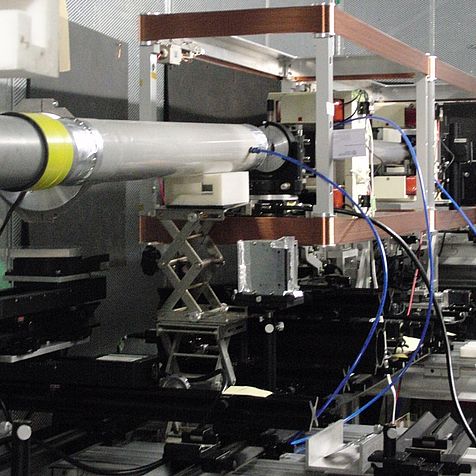
Holography and Neutron Optics
Member of the research group Physics of Functional Materials
Martin Fally’s research interests include nonlinear optics, neutron optics and interferometry, diffraction & diffraction theories, as well as functional materials.
-
Franchini Cesare - Quantum Materials & Quantum Modelling
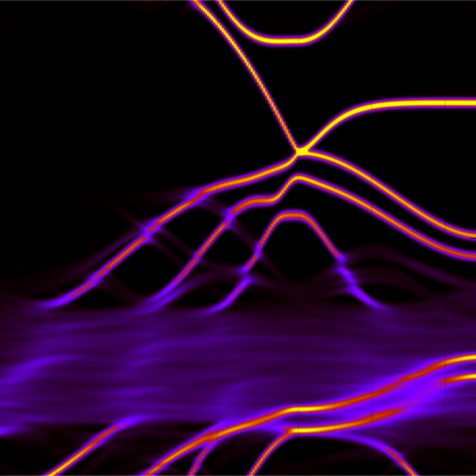
Quantum Materials & Quantum Modelling
Member of the research group Computational Materials Physics
The research work is concerned with the theoretical understanding and computational modelling of quantum materials (bulk and surfaces) using first principles methods (primarily VASP). Quantum materials are systems with many interacting degrees of freedom (lattice, spin and electron orbital) that represent a rich platform for the discovery of novel electronic and magnetic phases with fundamental and applicative interest. Specific topics include: Metal-insulator transitions, Polaron physics (electron-phonon interactions), non-collinear spin orderings, topological Dirac/Weyl phases, multiferroism and superconductivity.
-
Fredenhagen Stefan - Mathematical Physics
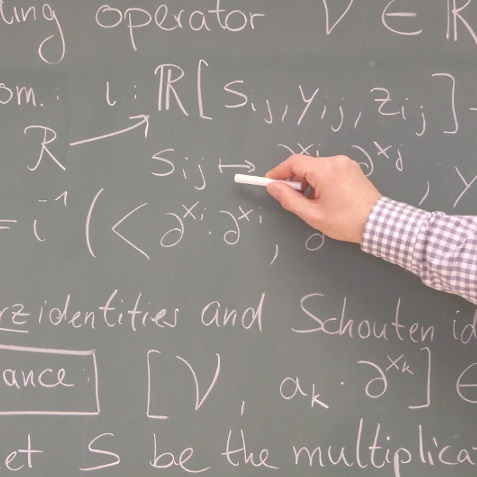
Mathematical Physics
Stefan Fredenhagen’s research deals with mathematical and theoretical questions in quantum field theory, gravity and string theory, with a special focus on two-dimensional conformal field theories and higher-spin extensions of gravity.
-
Golser Robin - Isotope Physics
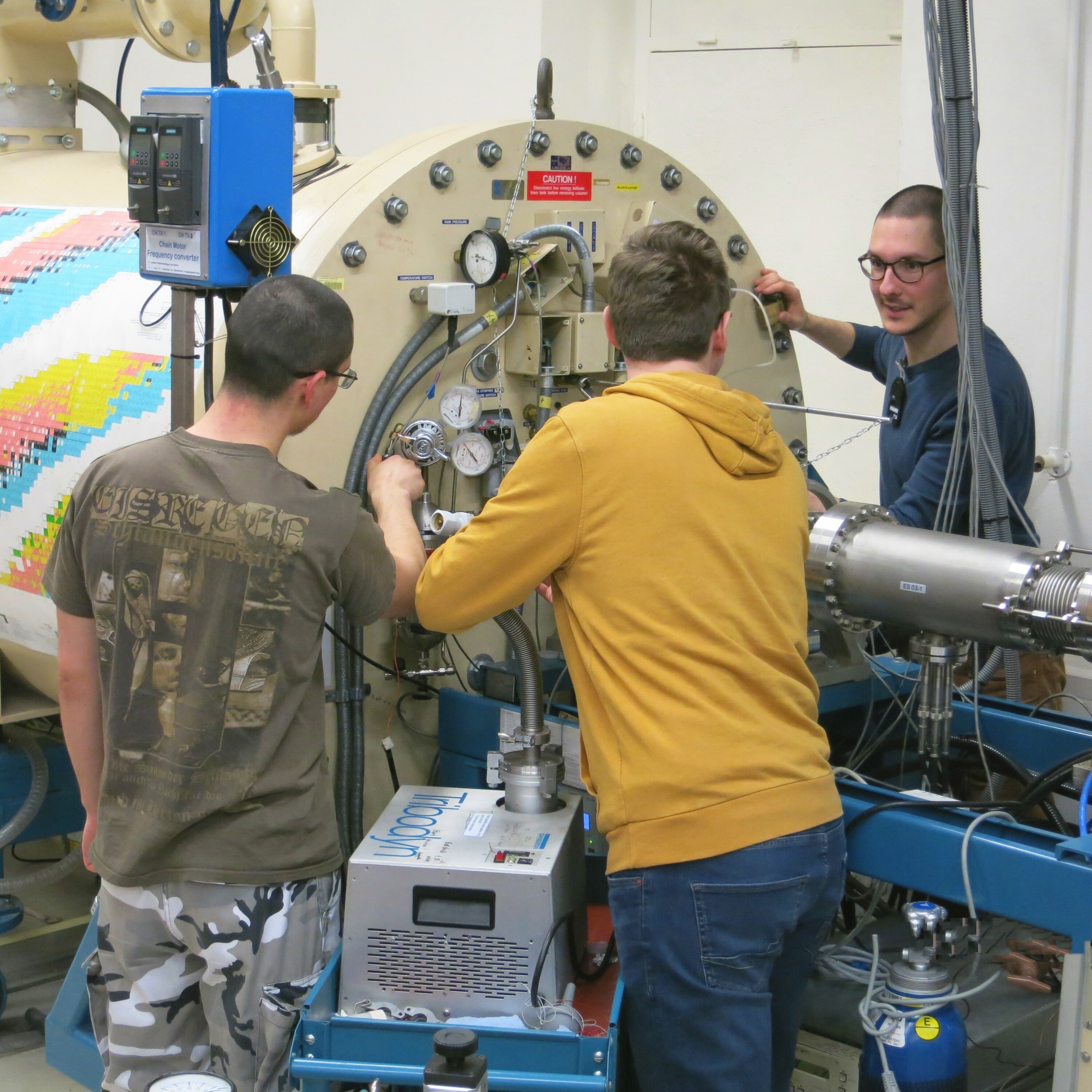
Isotope Physics
Member of the research group Isotope Physics
The Isotope Physics research group operates the particle accelerator "VERA" (Vienna Environmental Research Accelerator), a modern facility for accelerator mass spectrometry (AMS). Research projects focus on the investigation of our world by means of elements occurring in minute traces, using long-lived radioisotopes of both natural and anthropogenic origin. We conduct basic physics experiments as well as a variety of interdisciplinary research programs. Research at VERA contributes to the faculty focus "Physics and Environment".
-
Hain Karin - Isotope Tracers
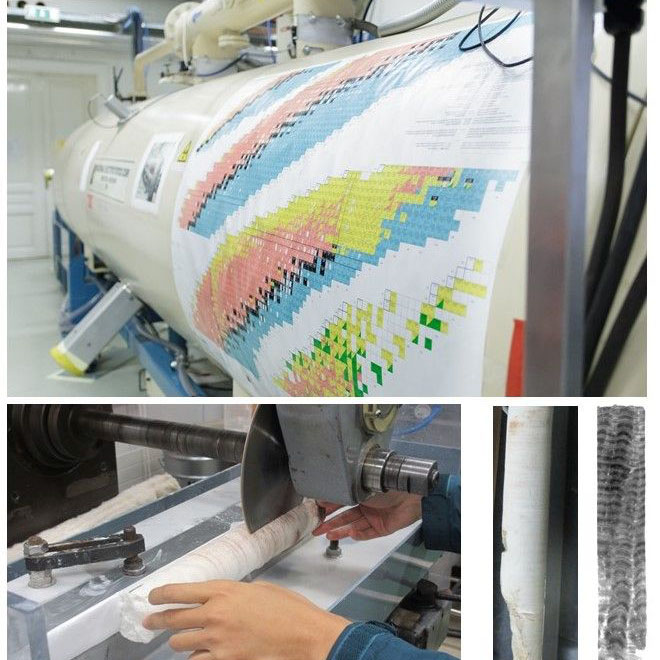
Isotope Tracers
Member of the research group Isotope Physics
Our research focuses on the development of sensitive analytical methods based on Accelerator Mass Spectrometry (AMS) to identify characteristic radionuclide signatures to monitor environmental mass transport, e.g. as a response to climate change. This comprises sample preparation methods for different environmental materials as well as employing and extending the advanced AMS instrumentation available at "VERA" (Vienna Environmental Research Accelerator) in order to increase the number of radionuclide tracers accessible by AMS. To answer the question whether a radionuclide is a suitable tracer requires a thorough understanding of its emission sources and its physico-chemical behaviour under the complex environmental conditions. Consequently, our research is strongly interdisciplinary and requires input from various disciplines of environmental science / geology.
-
Heckl Oliver - Optical Frequency Combs and their Application
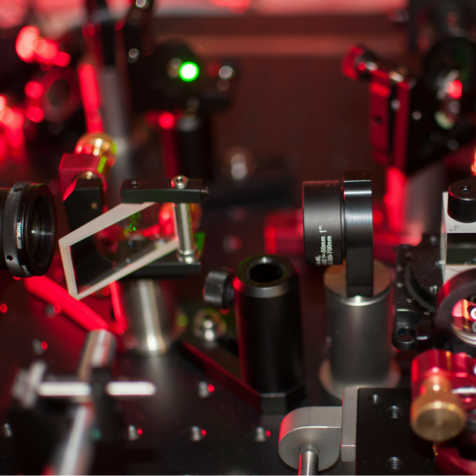
Optical Frequency Combs and their Application
Member of the Faculty Center for Nano Structure Research
The research of the Optical Metrology Group (OMG) centres on optical metrology and sensing, ultimately aiming to develop experiments sensitive enough to track time variations of fundamental constants. To that end, we are working on novel schemes in broadband precision spectroscopy and light-matter interaction of structured light. Our research includes work on low-noise (mid-IR) fibre lasers, mid-IR supermirrors, environmentally stable single-cavity dual-combs, and frequency combs in general.
Important papers from the group led by Prof. Oliver Heckl focused on fibre laser design for frequency comb applications, mid-infrared interference coatings, and mid-infrared supermirrors. The OMG is also part of the Special Research Program “Coherent Optical Metrology Beyond Electric-Dipole-Allowed Transitions” (COMB.AT), where they work together with scientists from TU Wien, ISTA and the Julius-Maximilians Universität Würzburg to study the limitations of light-matter-interactions by working with light that carries orbital angular momentum.
-
Hiesmayr Beatrix C. - Quantum Particles at High and Low Energies
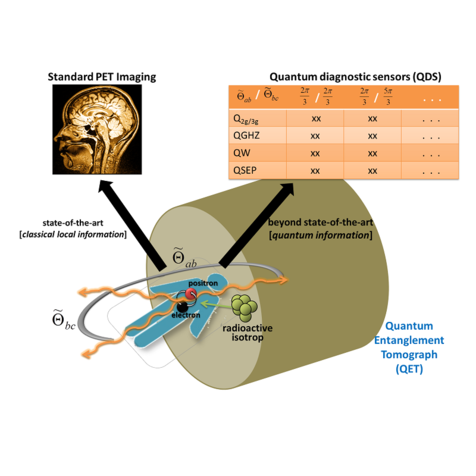
Quantum Particles at High and Low Energies
Member of the research group Quantum Optics, Quantum Nanophysics and Quantum Information
Our studies mainly concern the quantum phenomena at high and low energies. Our research spans from very mathematical aspects to experimental ones and, recently, also towards technological realizations.
-
Hoang André - Particle Physics
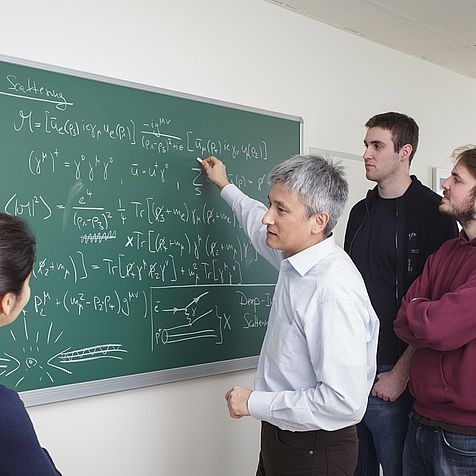
Particle Physics
In our theory group we use quantum field theory methods to determine precise predictions for observables that can be measured at collider experiments such as the Large Hadron Collider. A particular focus is on studying processes involving heavy and unstable particles such as the top quark, which is the heaviest known elementary particle, and the structure of perturbation theory at large orders including non-perturbative effects.
-
Hopf Martin - Basic Experimental Physics Training and University Didactics
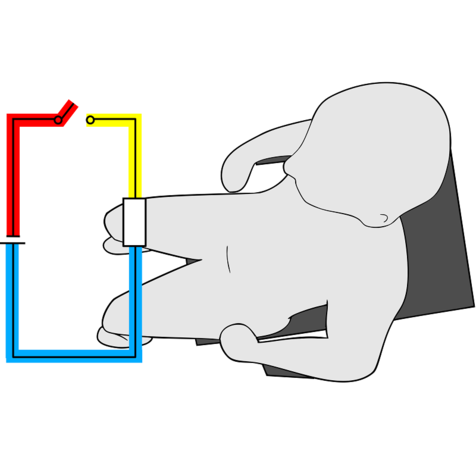
Basic Experimental Physics Training
and University DidacticsThe group "Basic Experimental Physics Training and University Didactics" is dedicated to experimental physical basic training and scientific questions on teaching and learning physics.
-
Huber Marcus - Quantum Information and Thermodynamics
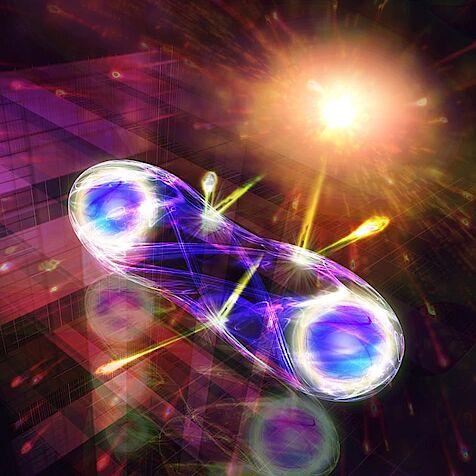
Quantum Information and Thermodynamics
Member of the Institute for Quantum Optics and Quantum Information – Vienna
Our group aims to understand the role that information plays in the process of learning about and manipulating our physical environment.
-
Juffmann Thomas - Quantum Imaging and Biophysics
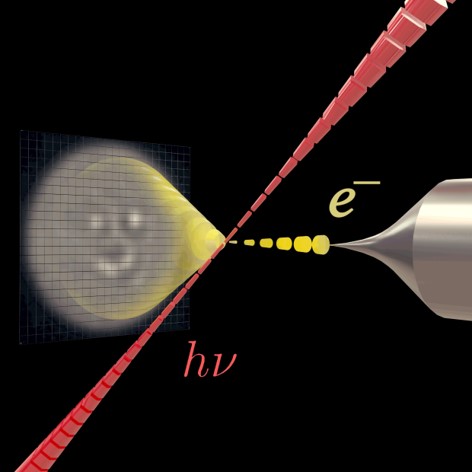
Quantum Imaging and Biophysics
Member of the research group Quantum Optics, Quantum Nanophysics and Quantum Information
In any image, the number of detected probe particles is fundamentally limited, either due to finite acquisition times or probe-induced sample damage. In order to optimize the sensitivity of a microscope, the information that can be extracted from each detected probe particle has to be maximized. We achieve this by employing cavity enhancement, quantum enhancement, and wave-front shaping techniques.
-
Kantorovich Sofia - Dipolar Soft Matter
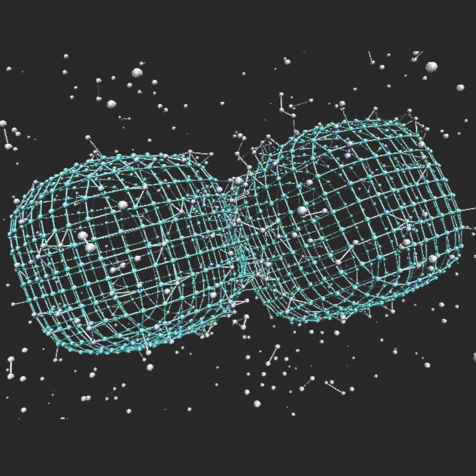
Dipolar Soft Matter
Member of the research group Computational and Soft Matter Physics
We are using a fine weave of theory and computer simulations to elucidate the properties of dipolar soft matter.
-
Kiesel Nikolai - Stochastic and Quantum Thermodynamics with Levitated Nanoparticles
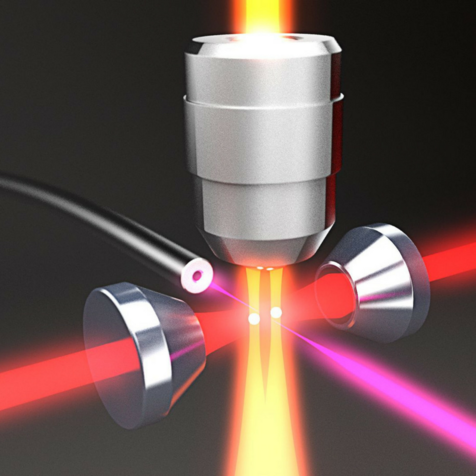
Stochastic and Quantum Thermodynamics
with Levitated NanoparticlesMember of the research group Quantum Optics, Quantum Nanophysics and Quantum Information
Cavity-Optomechanics provides a unique approach to Stochastic and Quantum Thermodynamics at the single- and few particle level. The thermodynamic perspective on overdamped mechanical systems has been successfully and much more extensively studied than on well-isolated mechanics. We experimentally investigate such underdamped mechanical systems. Amongst others, this provides a natural first step towards the extension of this approach into the quantum regime. Our focus lies on the application of levitated optomechanics, where all-optical control of the potential landscape seen by a single or few nanoparticles and reservoir engineering of their optical environment are possible. This will provide a general testbed for proof-of-principle implementations to experimentally adress questions at the interface of thermodynamics, information theory and quantum physics, like information or quantum heat engines.
-
Kotakoski Jani - Nanostructured and novel materials
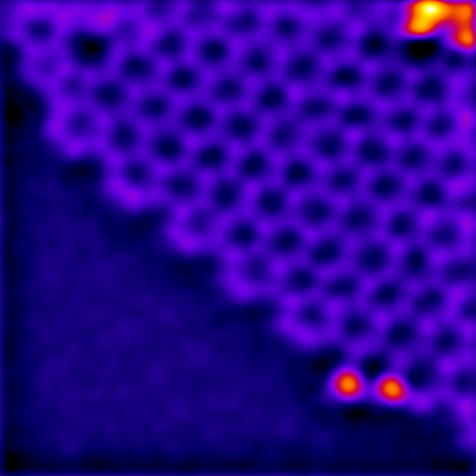
Nanostructured and novel materials
Member of the research group Physics of Nanostructured Materials
Our research group has a long history in atomic-scale structural manipulation of low-dimensional materials using electron and ion irradiation combining experimental materials physics, atomic-resolution transmission electron microscopy and spectroscopy, and computational physics. The latest research directions range from advanced microscopy techniques (in situ imaging, 4DSTEM) and high energy-resolution electron energy loss spectroscopy to creating atomically tailored structures embedded in solid state matrices to pave way for the second quantum revolution and green energy production and storage.
-
Kresse Georg - Computational Materials Physics
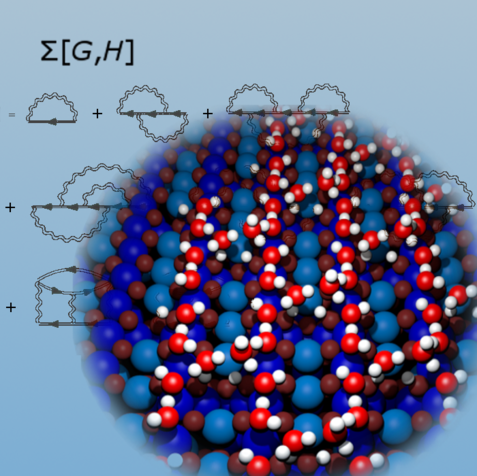
Computational Materials Physics
We develop first principles methods for materials sciences. First principles means that no parameters whatsoever are used in the simulations, which is achieved by solving the many body Schrödinger equation. Current research focuses on novel Monte Carlo methods for electrons and the combination of machine learning with first principles methods.
-
Lang Wolfgang - Superconductivity
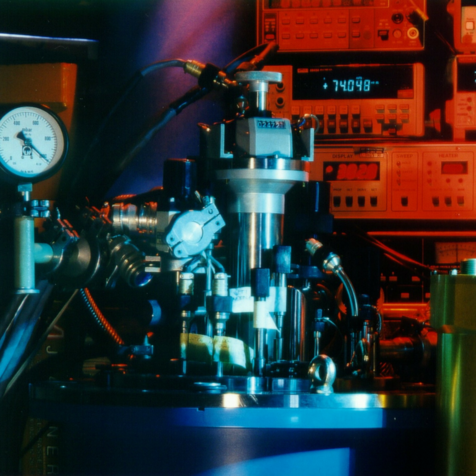
Superconductivity
Member of the research group Electronic Properties of Materials
Our research focuses on studying the electronic transport properties of new superconductors. We are particularly interested in understanding how these materials behave under extreme conditions, such as high current densities and varying magnetic field strengths, ranging from ultra-low to very strong. Our ongoing research includes investigating vortex dynamics and pinning in high-temperature superconductors, fluxonic quantum devices, order parameter fluctuations, ion irradiation-solid interactions, simulating ion collision cascades, and fabricating large-area nanostructures using masked or focused helium ion beams.
-
Likos Christos - Soft Matter Theory and Simulation
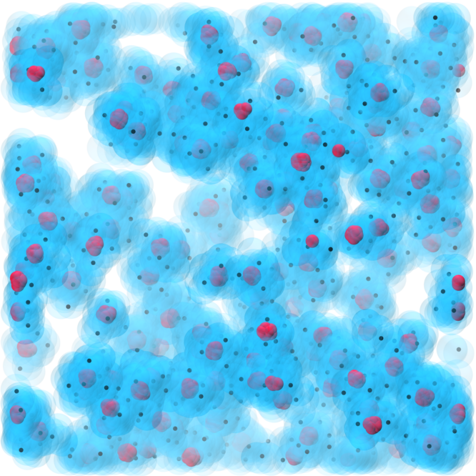
Soft Matter Theory and Simulation
Member of the research group Computational and Soft Matter Physics
Work in our group focuses on the research area of Theoretical and Computational Physics of Soft Condensed Matter.
-
Müller Markus - Quantum information and foundations of physics
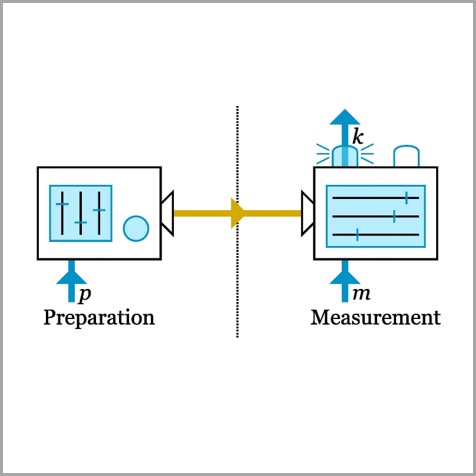
Quantum information and foundations of physics
Our group studies the foundations of physics from an information-theoretic perspective. The main tool and inspiration is quantum information theory, which we apply to a variety of questions: what are the laws of thermodynamics for very small or strongly correlated systems? Can we derive the abstract formalism of quantum theory from simple principles? How are detector click probabilities constrained by spatiotemporal symmetries, and can we use these insights for novel quantum information protocols? What is the nature of reality and our place in it?
Aiming for complete mathematical rigor and conceptual clarity, our research touches mathematics, physics, computer science, and philosophy. Since we prove theorems with paper and pencil, our work can broadly be classified as mathematical physics.
-
Navascues Miguel - Quantum foundations and science fiction

Quantum foundations and science fiction
In this group, we investigate the feasibility of science fiction constructs, old and new, either by showing that they violate basic physical principles or by proposing actual experimental implementations. Can we build a quantum rocket? Is it possible to move objects through time? How would the world look like if it were not quantum? These are the questions that keep us awake at night.
-
Nunnenkamp Andreas: Quantum Control and Quantum Many-Body Physics
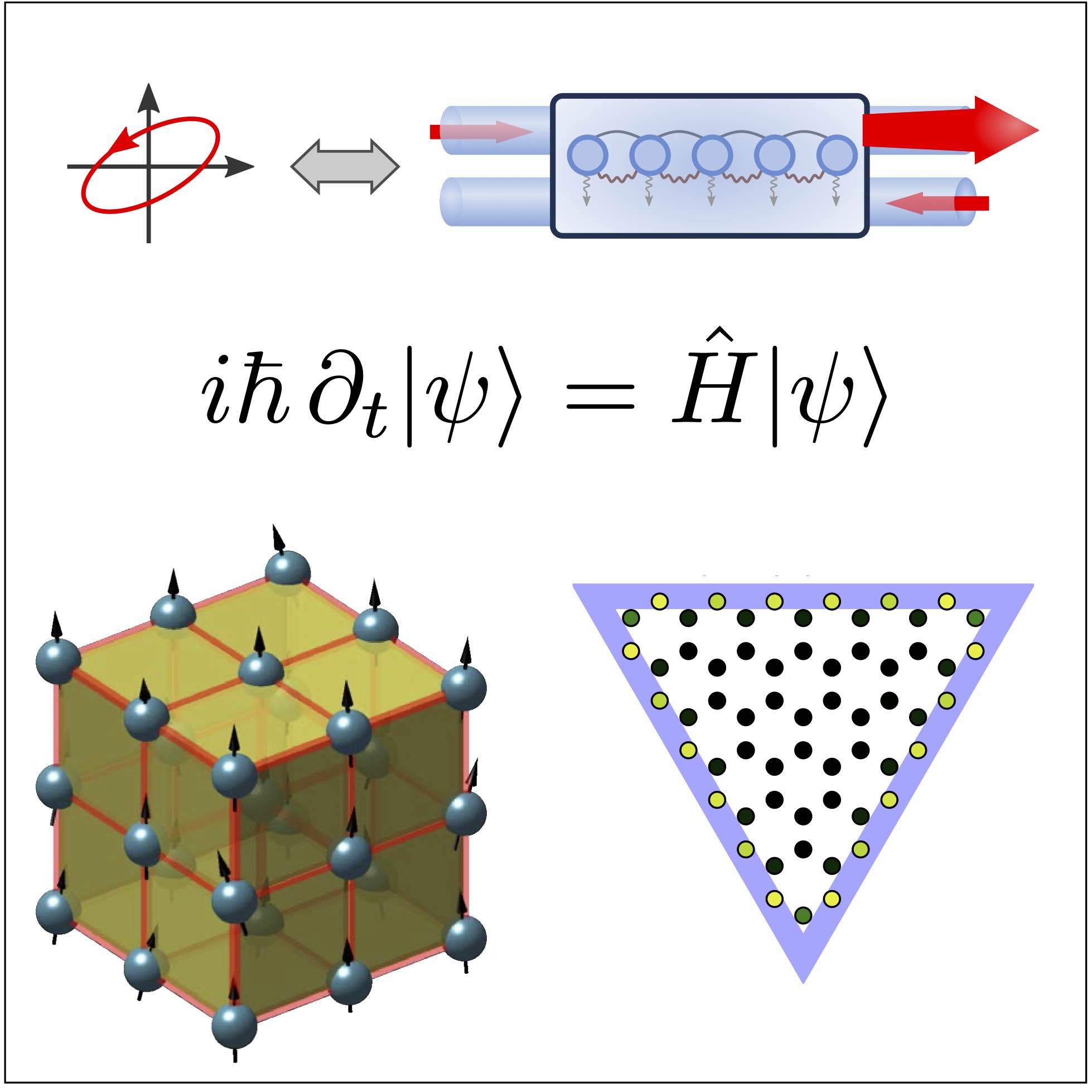
Quantum Control and Quantum Many-Body Physics
Member of the research group Quantum Optics, Quantum Nanophysics and Quantum Information
We are a theory group interested in how to create, control and exploit quantum coherence in the many-body setting. The big questions we address include the interplay of topology, interactions, and disorder, and the control by driving, feedback, and dissipation. We aim at advancing quantum technology and the understanding of non-equilibrium phases of matter.
-
Peterlik Herwig - Dynamics of Condensed Systems
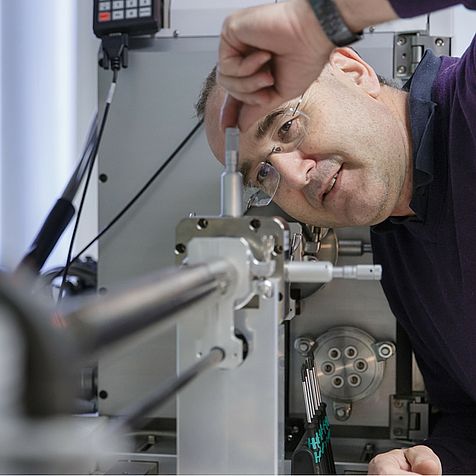
Dynamics of Condensed Systems
The group "Dynamics of Condensed Systems" studies the dynamics of atomic diffusion processes, the structure of materials on the nanometer scale and the kinetics of structural changes in those materials. The spectrum of the analyzed materials includes natural composites like bone or wood, metal films, metallic glasses, carbon nano phases and inorganic-organic hybrid systems. We employ both computer simulations like Monte Carlo or Reverse Monte Carlo techniques and experimental methods like X-ray diffraction in our research.
-
Pichler Thomas - Low Dimensional Quantum Solids
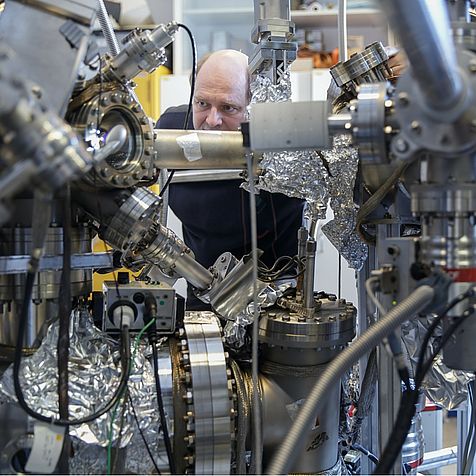
Low Dimensional Quantum Solids
Member of the research group Electronic Properties of Materials
We dedicate great part of our research to pristine carbon based molecular structures. We aim at understanding which parameters control their electronic structure before one starts to subsequently engineer their properties via different functionalization paths.
-
Pradler Josef - Theory New Physics
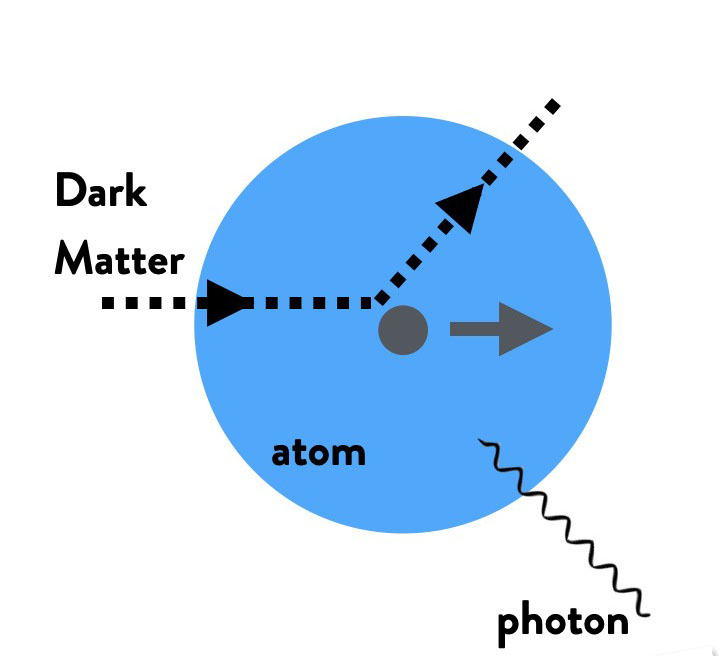
Theory New Physics
Double affiliation with Institute of High Engergy Physics (ÖAW)
Our theory group explores the phenomenology of physics beyond the Standard Model, first and foremost motivated by the dark matter problem. We study axions, weakly interacting massive particles, dark photons, and other particle dark matter candidates. We devise strategies to experimentally and observationally test for their existence and check for their cosmological and astrophysical viability through detailed theoretical calculations.
-
Procura Massimiliano - Particle Physics
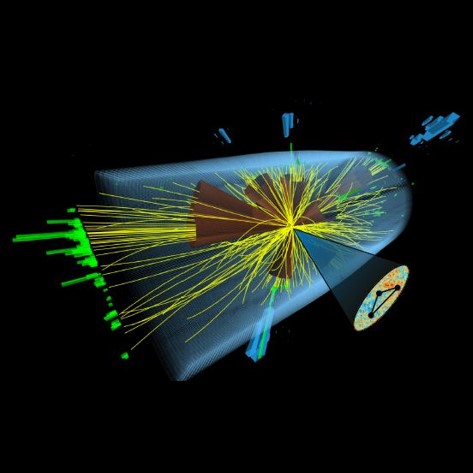
Particle Physics
The Standard Model stands out as an exceptionally successful quantum field theory, currently providing our best fundamental understanding of particle physics phenomenology. Unprecedentedly accurate tests of this paradigm are made possible by ongoing and upcoming experiments spanning a broad range of energies. The goal of our research is to illuminate the structure of the Standard Model as well as boost the search for new phenomena beyond it, through first-principle precision calculations in quantum field theory. Specifically, we focus on developing novel analytic methods to maximize the discovery potential in both collider experiments and highly sensitive measurements at lower energies.
-
Rentenberger Christian - Amorphous and Nanostructured Materials
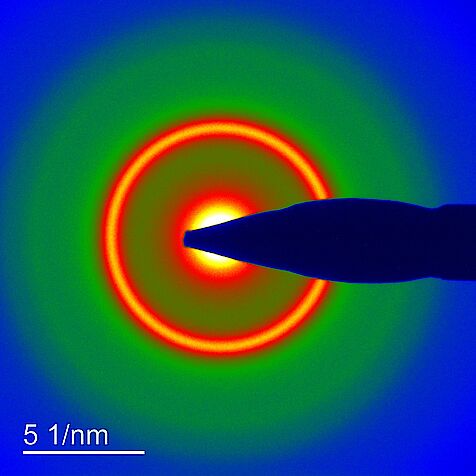
Amorphous and Nanostructured Materials
Member of the research group Physics of Nanostructured Materials
Bulk metallic glasses, Mechanical properties of amorphous thin films, Nanocrystalline bulk materials, Nanostructured thin films
-
Ries Jonas - Super-resolution microscopy
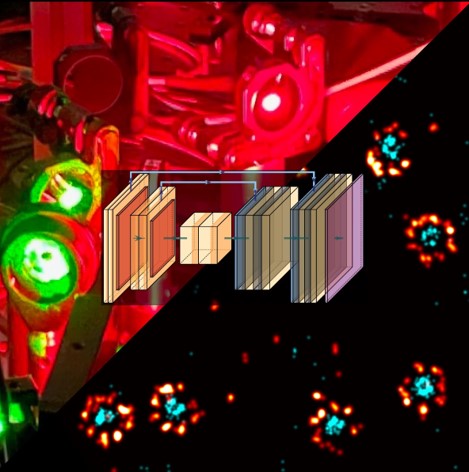
Super-resolution microscopy
Member of the Department of Structural and Computational Biology
We develop new super-resolution microscopy technologies to push the resolution of optical microscopy to the nanometer scale. To this end, we construct and build microscopes, and we develop software for data analysis and instrument control, making use of advanced machine learning approaches. We use our technologies to investigate the structure and dynamics of proteins in cells.
-
Schafler Erhard - Nanostructured Materials
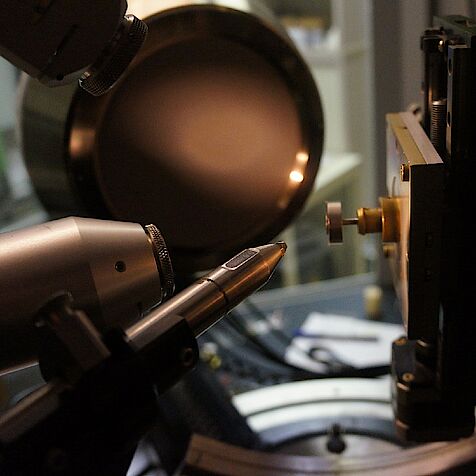
Nanostructured Materials
Member of the research group Dynamics of Condensed Systems
Bulk Nanocrystalline Metals and Alloys, X-ray Profile Analysis, High Entropy Alloys, Functional properties of nanostructured materials, Plasticity of Polymers
-
Schranz Wilfried - Physics of Functional Materials
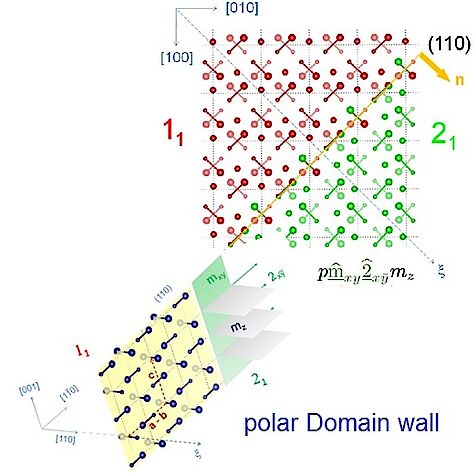
Physics of Functional Materials
Research within the group Physics of Functional Materials focuses on 3D Printing of Magnets, Dynamic Mechanical Analysis, Magnetic Sensors, Magnetic Simulation, Neutron Optics and Diffraction, Nonlinear Optics and Photosensitive Materials and Phase Transitions, Glass Transitions.
-
Schuch Norbert - Quantum Information and Quantum Many-Body Physics
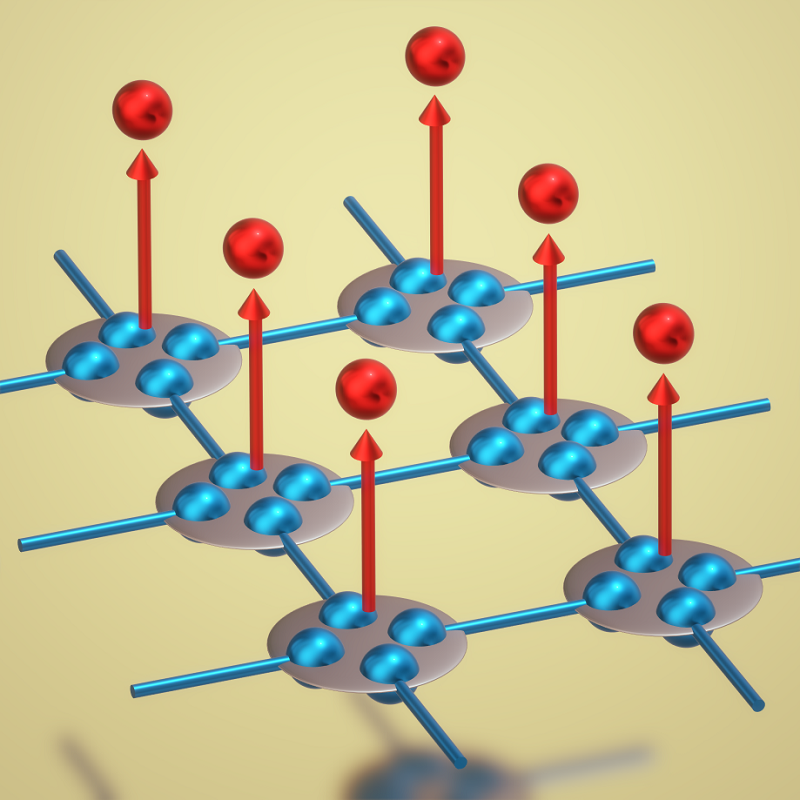
Quantum Information and Quantum Many-Body Physics
Member of the research group Quantum Optics, Quantum Nanophysics and Quantum Information
Quantum Information studies the tasks of information processing and computation using quantum mechanical systems and their non-trivial quantum correlations, termed entanglement. On the other hand, quantum many-body systems exhibit a wealth of unconventional phenomena precisely due to their complex entanglement, which makes them promising candidates for unconventional materials or as a substrate for quantum information processing and computation. We study the interplay of Quantum Information and Quantum Many-Body Physics, combining methods from mathematics, physics, and computer science to obtain a comprehensive understanding of these systems and their usefulness in quantum information processing and computation.
-
Sepiol Bogdan - Dynamics of Condensed Systems
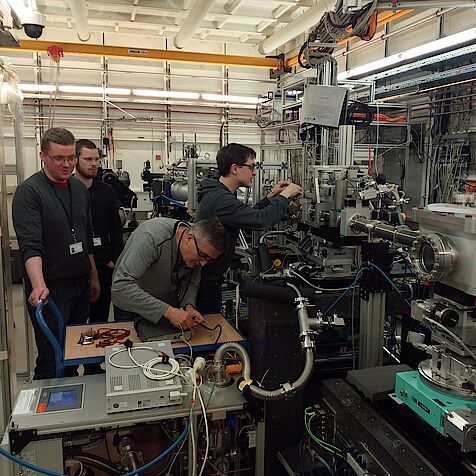
Dynamics of Condensed Systems
My key research area is the study of the properties of materials, like the dynamics (diffusion and phonons) and kinetics of condensed systems, in particular metallic films, intermetallic alloys, as well as metallic glasses and fast ionic conductors, by scattering and by simulation techniques.
-
Sperling Marcus - Quantum Field Theories
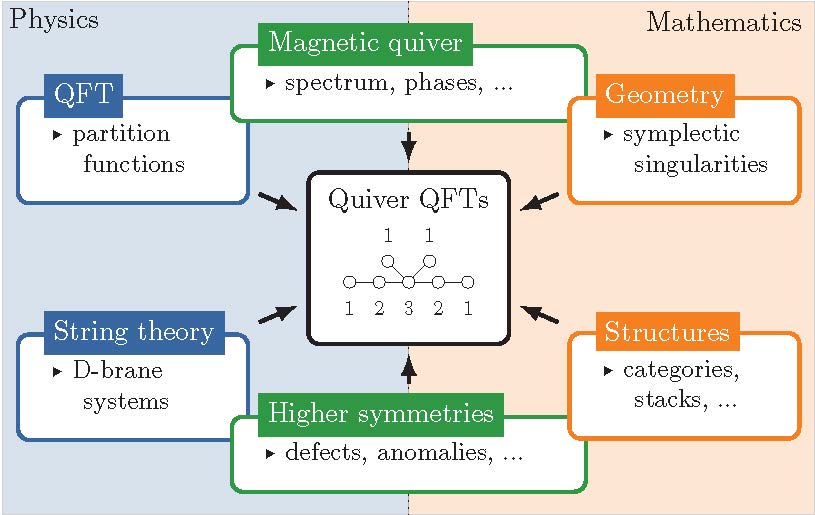
Marcus Sperling’s research explores fundamental aspects of quantum field theories (QFTs). As QFTs are complex and intricate, we first study a simplification, known as supersymmetric quantum field theories, which allows for more control over notoriously challenging non-perturbative effects. Using deep-rooted connections, important physical quantities, such a vacua (ground states) and global symmetries, can be studied via modern mathematics. Conversely, the intuitive QFT techniques offer a fresh perspective on the underlying geometric structures.
-
Steinacker Harold - Covariant Quantum Spaces, Higher Spin, and Gravity
Covariant Quantum Spaces, Higher Spin, and Gravity
Member of the research group Mathematical Physics.
Harold Steinacker's research interest is the theory of fundamental interactions, and the inclusion of gravity in a consistent quantum framework. The main focus is on an approach known as „Matrix Theory“, which is related to string theory. This provides an independent and well-defined model where space-time and matter are treated on the same footing, and emerge from more fundamental matrix degrees of freedom. The current focus is on the mechanism underlying emergent gravity within that framework. -
Susi Toma - Atomic-Scale Properties and Manipulation
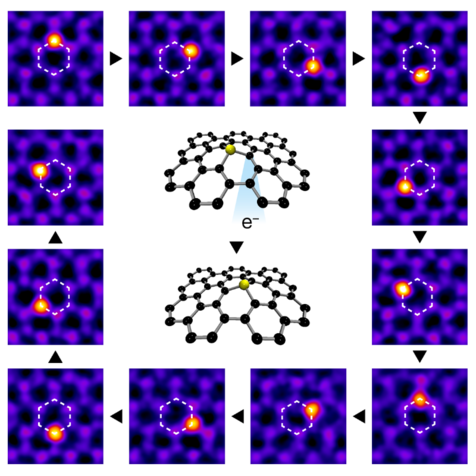
Atomic-scale properties and manipulation
Member of the research group Physics of Nanostructured Materials
The Susi group is focused on understanding the effects of electron and ion irradiation on low-dimensional materials via closely coupled atomically resolved experiments and first principles modeling. Such knowledge enables the implantation of heteroatom impurities into the lattice, reveals their bonding by electron energy loss spectroscopy, and ultimately allows their manipulation with atomic precision using a focused electron beam. The group is also pioneering first-principles transmission electron microscopy simulations using its in-house abTEM code.
-
Süss Dieter - Physics of Functional Materials
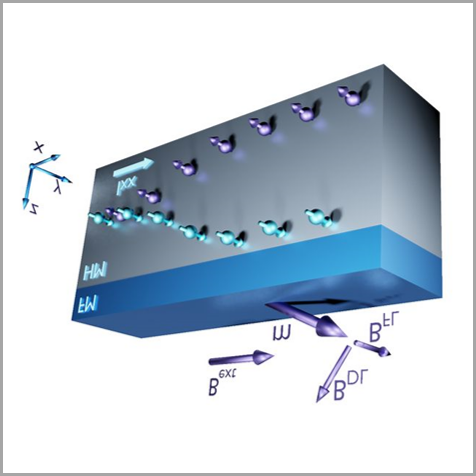
Physics of Functional Materials
Our research integrates fundamental concepts with practical applications in magnetic sensors, storage, and computing. The research is based on the theory of micromagnetics, which describes magnetic domain walls in space and time coupled to spin transport equations. To validate the developed theories, experimental measurements are performed on a physical property measurement system.
-
Thurner Stefan - Foundations of Complex Systems

Foundations of Complex Systems
Complex systems, by their nature, pose challenges to our understanding. They typically involve many components intricately connected through networks. Neither the parts nor the networks are static. Instead, they mutually influence each other as they co-evolve. This dynamic interplay represents fundamental problems in the scientific description of complex systems.
The bottlenecks for understanding complex systems in ways that would allow us to control and manage them are often of methodological nature. We do not have the necessary mathematical and computational methods and tools – yet. To make progress, it is imperative to develop mathematics and statistics tailored for networked dynamical systems, often distinct from traditional statistics and physics approaches. A fundamental challenge is how to deal with co-evolutionary systems in practical ways with new insights from mathematics, physics, and the statistics of correlated processes. We develop the necessary methodological approaches to address this challenge.
We aim to solve problems that have been hitherto impossible to treat in scientific terms. Our foundational research contributes to diverse research areas at the CSH and beyond. This encompasses specific challenges in mathematics, artificial intelligence, and statistics, as well as simulation techniques that aid in understanding collective phenomena, ranging from systemic risks in financial markets to the fragmentation of societies.
-
Tröster Andreas - Computational approaches to phase transitions
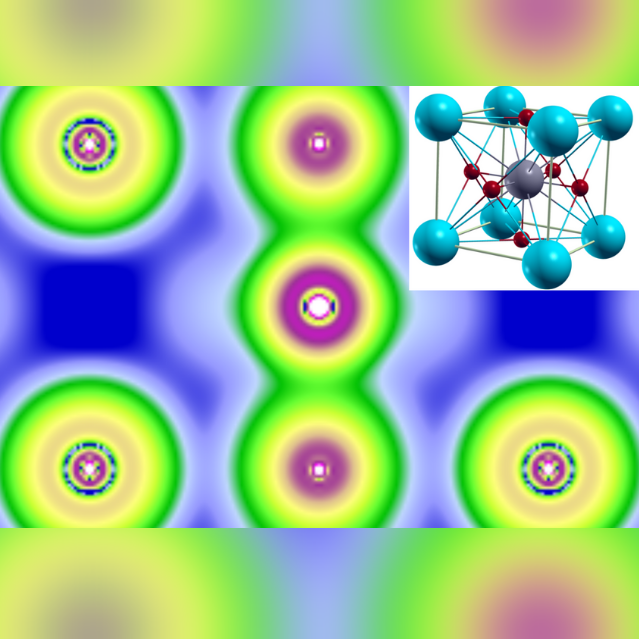
Computational approaches to phase transitions
Member of the research group Computational and Soft Matter Physics
Most of my research aims at bridging the gap between the traditional phenomenological and mesoscopic vs. the modern atomistic and quantum-mechanical description of phase transitions in condensed matter, a field which constitutes a central area of research in modern theoretical and materials physics. For many decades, phenomenological or semi-quantitative approaches like (i) the Landau theory of phase transitions, which is based on a coarse-grained description of phase transition guided by a rigorous symmetry analysis but numerically determined by fitting a set of expansion coefficients to experimental observables and (ii) the renormalization group theory for critical phenomena have proven to be invaluable tools for our physical understanding of various related phenomena that are often both of theoretical as well as technological importance. Nowadays, however, the arsenal of tools available in modern computational physics allows to significantly refine these concepts. On the one hand, simulations techniques like the Monte Carlo method and molecular dynamics offer to study the statics and dynamics of a given system quantitatively at finite temperature. On the other hand, using quantum mechanical computations based on e.g. modern density functional theory (DFT) we are able to access realistic microscopic energies and forces with high accuracy. For instance, we have recently extended classical Landau theory to high pressure structural phase transition by incorporating information from DFT. In cooperation with faculty member Wilfried Schranz we study the possible emergence of nonzero polarization in domain walls between non-polar domains with a recently developed layer group symmetry analysis technique. Presently we aim at developing computational approaches involving the machine-learning techniques developed in the Dellago group, which will be combined with Monte Carlo and DFT to simulate this phenomenon on the atomistic level.
-
Waitz Thomas - Phase transformation in Nanomaterials
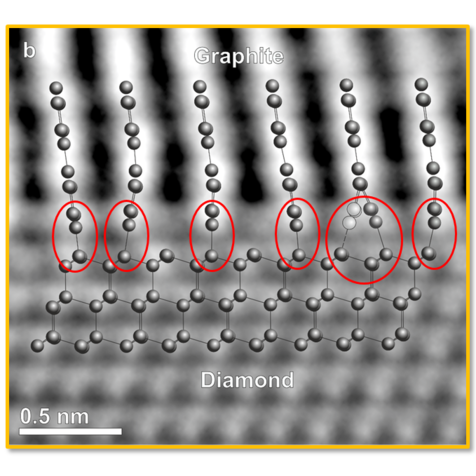
Phase transformation in Nanomaterials
Member of the research group Physics of Nanostructured Materials
Reversible shape changes of ferroelastic materials showing martensitic phase transformations can be controlled by temperature, stress or magnetic fields. Grain size at a nanoscale can strongly impact the martensitic phase transformation and therefore the shape memory effect and superelasticity. Nanocrystalline and ultrafine grained shape memory materials including NiTi alloys, low-hysteresis NiTiPd alloys, and ferromagnetic high-temperature NiMnGa alloys are processed by methods SPD. The lattice structures of the martensitic phases, self-accommodated martensitic domains, transformation temperatures, as well as the enthalpy and entropy changes upon transformation are studied by systematic experiments. These results are analysed using thermodynamic models considering the total Gibbs free energy of ferroelastic domains confined to small grains.
-
Waltenberger Wolfgang - CMS Physics Analysis
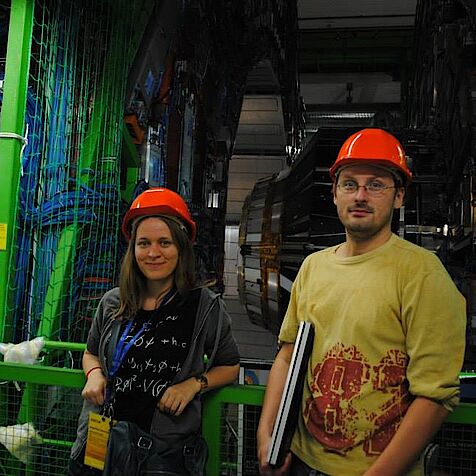
CMS Physics Analysis
Member of the Institute of High Energy Physics
At HEPHY in Vienna I have started an analysis group that searches for signs of supersymmetry at CMS. In the last few years, though, I have focussed on the interpretation of the search results: given a positive or a null result, what are its implications? What do the data really tell us about supersymmetry, or other theories, and the question of naturalness? To this end I founded a small collaboration, and together we developed "SModelS", a software framework that allows us to confront an arbitrary theoretical model with LHC results. It is my ultimate vision that we can learn the fundamental physical laws beyond the Standard Model in an unsupervised fashion, employing modern machine learning techniques.
-
Walther Philip - Quantum Information Science and Quantum Computation
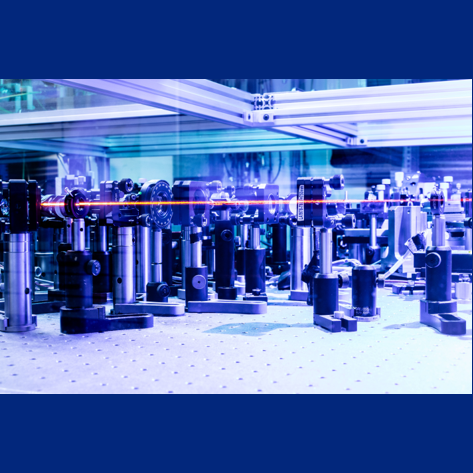
Quantum Information Science and
Quantum ComputationMember of the research group Quantum Optics, Quantum Nanophysics and Quantum Information
Our research combines the development of scalable photonic quantum technology for quantum computing and other quantum information applications with the investigation of fundamental quantum science questions. The main activities reach from quantum control of single photons using solid-state photon sources, integrated waveguide technology, tailored nonlinear media and detectors based on superconductor technology to interferometric precision measurements of weak gravitational forces.
-
Weinzierl Bernadett - Aerosol physics and environmental physics
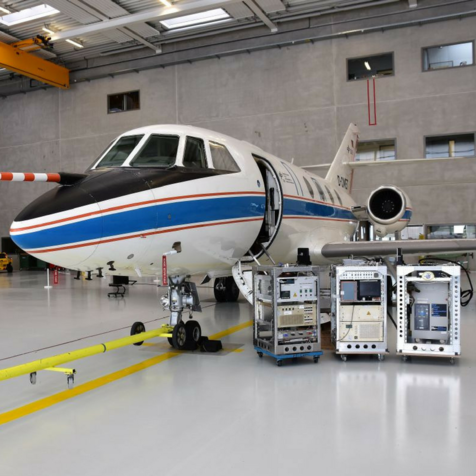
Aerosol physics and environmental physics
A particular strength of the group is in the development, adaptation and testing of measurement techniques, with a long track record of ground-breaking designs and technologies. Inter-disciplinary research investigates zones in exoplanetary systems supporting life based on solvents other than water. Current research is continually integrated into lectures and lab classes on aerosol science, environmental science and global change.
-
Widmann Eberhard - Hyperfine Structure of Antihydrogen
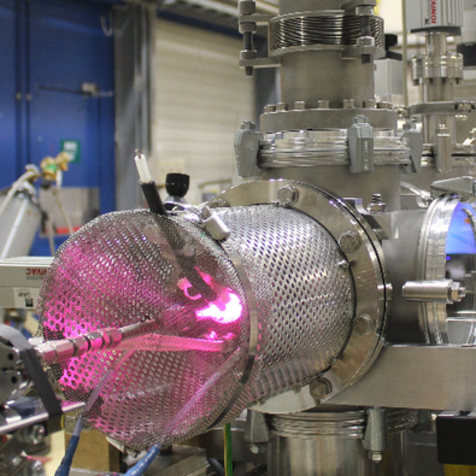
Hyperfine Structure of Antihydrogen
Member of the Stefan Meyer Institute for Subatomic Physics
The goal of the project is to study the hyperfine structure of antihydrogen, the simplest antimatter atom, and thus search for a violation of the charge-parity-time (CPT) symmetry of Nature. In parallel activities within the AEgIS collaboration at CERN-AD were pursued to evaluate a different approach of creating a slow beam of antihydrogen atoms needed for the measurement.
-
Winkler Paul - Aerosol Nanoparticle Formation
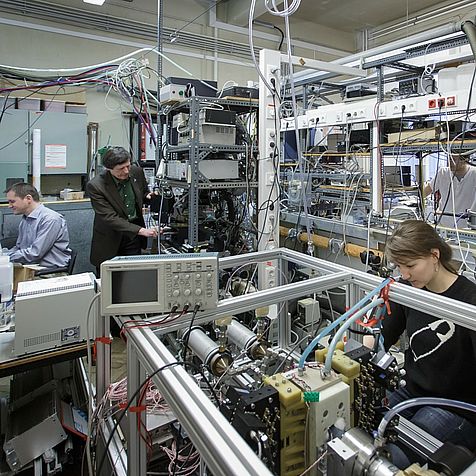
Aerosol Nanoparticle Formation
Member of the research group Aerosol Physics and Environmental Physics
Aerosol nanoparticle formation has been identified as a significant source of ambient aerosol that may impact cloud properties and is considered a health threat. Our research aims at resolving the initial steps in the transition of (trace) vapors to the condensed phase in nanoparticles. Such phase transition processes constitute a vital link between molecular scale interactions and macroscopically relevant outcome.
-
Zöttl Andreas - Active matter and hydrodynamics
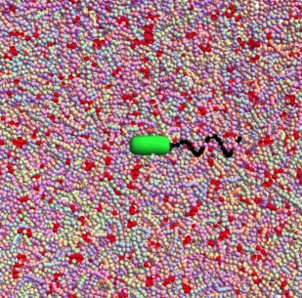
Active Matter and Hydrodynamics
Member of the research group Computational and Soft Matter Physics
We use theoretical and computational methods to understand how microscopic particles move in viscous fluids, with a strong focus on biological actively moving particles such as swimming microorganisms (e.g. bacteria, algae, sperm). For example, we use multi-scale hydrodynamic simulations to understand passive and active particle motion in complex biological fluids, and machine learning to understand decision-making of microorganisms moving in physical environments.

